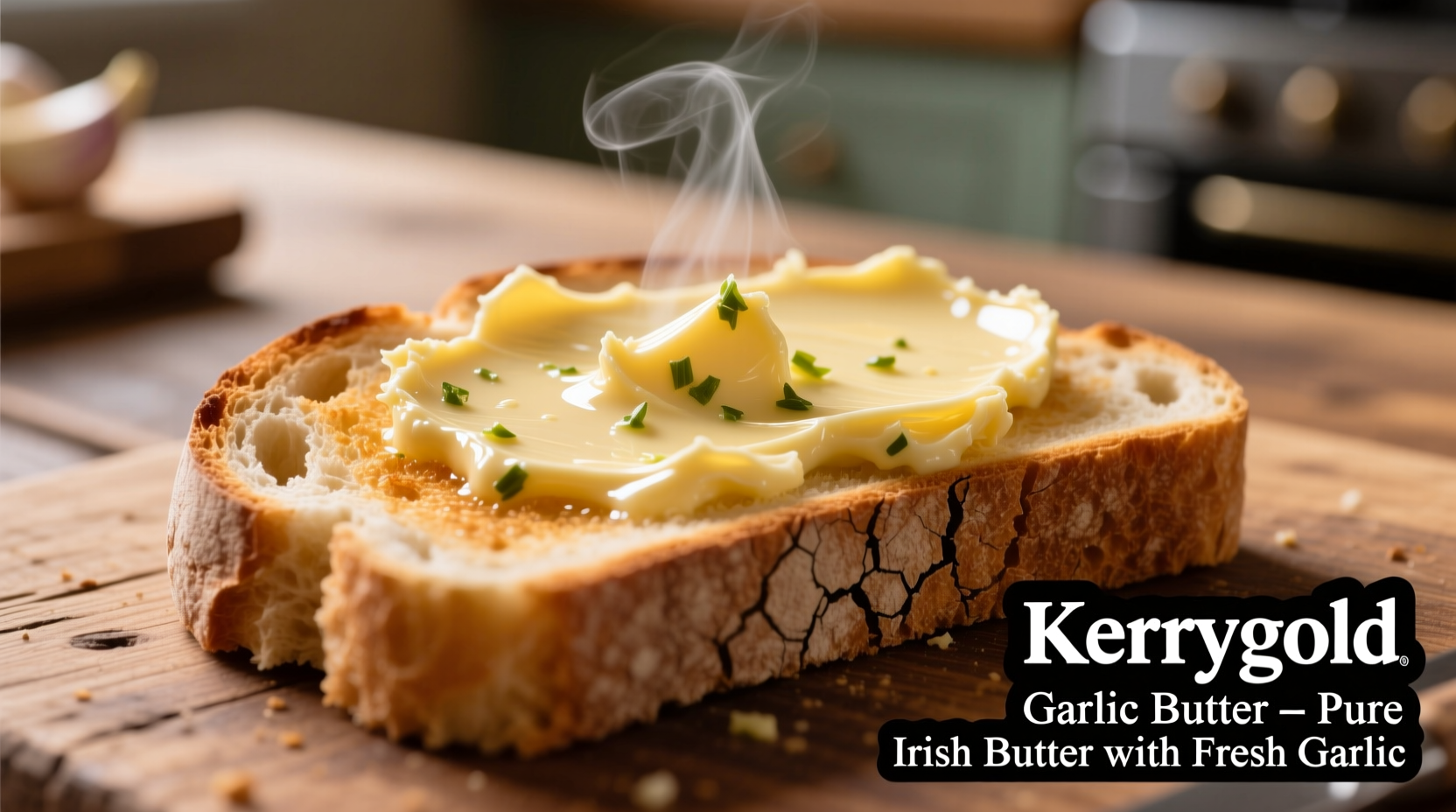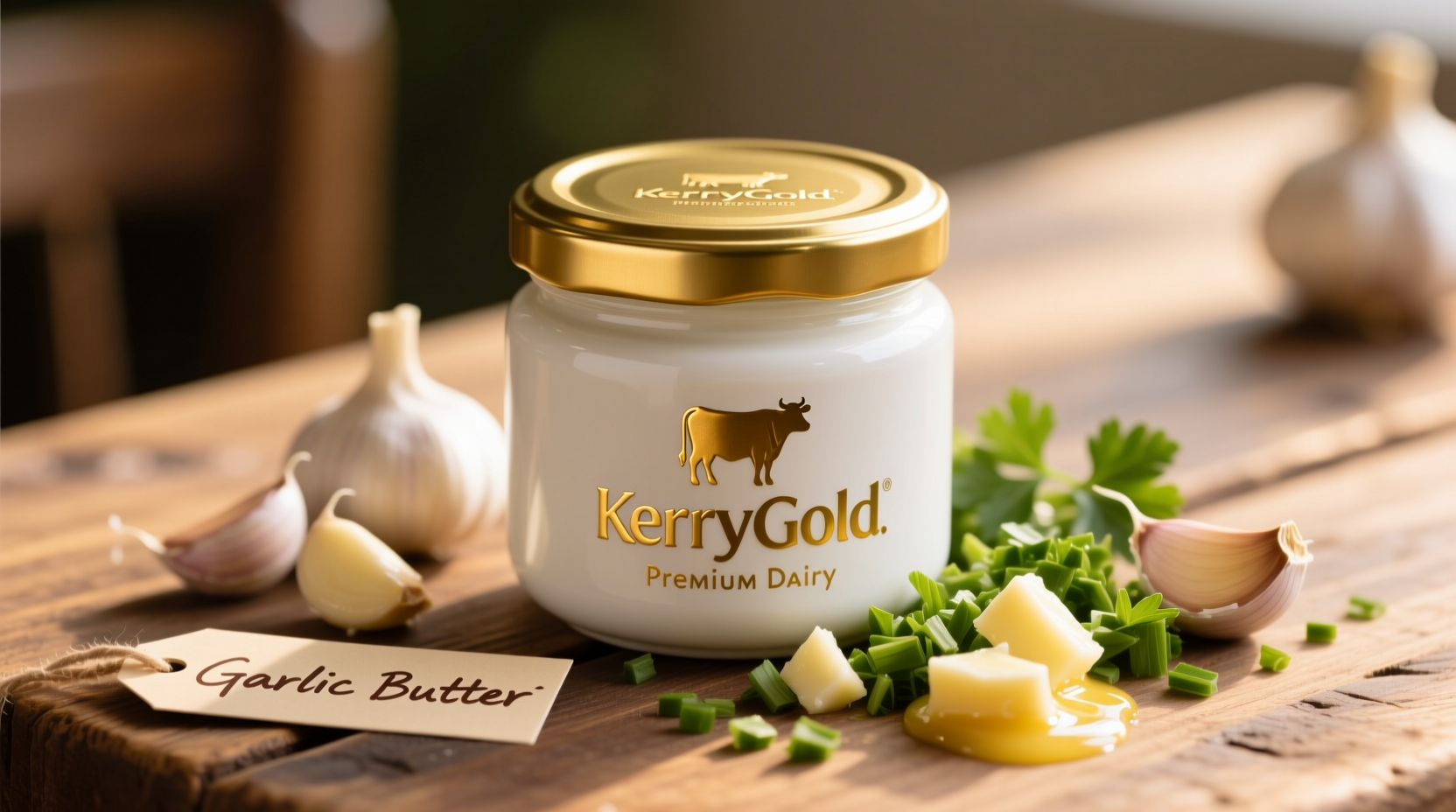Discover how Ireland's renowned dairy craftsmanship meets culinary tradition in Kerrygold garlic butter. This guide reveals practical applications, storage tips, and recipe ideas that transform everyday meals with minimal effort. Whether you're a busy home cook or culinary enthusiast, you'll learn exactly when and how to maximize this versatile ingredient.
What Makes Kerrygold Garlic Butter Unique
Unlike many commercial garlic butters that rely on artificial flavors, Kerrygold's version uses simple, recognizable ingredients: Irish grass-fed butter, garlic, parsley, and salt. The butter comes from cows grazing on Irish pastures year-round, contributing to its distinctive creamy texture and rich flavor profile.
The production process follows traditional European compound butter methods. According to the USDA Food Safety and Inspection Service, proper compound butter preparation requires maintaining temperatures below 40°F (4°C) during mixing to prevent bacterial growth. Kerrygold's manufacturing facilities adhere to these strict food safety standards while preserving authentic flavor development.
| Feature | Kerrygold Garlic Butter | Typical Store Brand | Homemade Version |
|---|---|---|---|
| Primary Ingredients | Grass-fed butter, garlic, parsley, salt | Butter, garlic powder, artificial flavors, preservatives | Fresh butter, minced garlic, herbs |
| Garlic Form | Fresh garlic puree | Garlic powder or artificial flavor | Fresh minced garlic |
| Shelf Stability | Refrigerated, 2 months unopened | Longer shelf life with preservatives | 1-2 weeks refrigerated |
| Flavor Development | Consistent, balanced garlic notes | Can be overly strong or artificial | Varies based on preparation |
Practical Applications in Everyday Cooking
Kerrygold garlic butter shines in applications where convenience meets quality. Professional chefs at the BBC Good Food Test Kitchen recommend compound butters for three primary uses: finishing proteins, enhancing vegetables, and flavoring breads.
For proteins: Add a tablespoon to fish or chicken during the last two minutes of cooking. The butter melts into a glossy sauce that carries garlic flavor without overpowering. Unlike raw garlic which can burn, the pre-cooked garlic in Kerrygold butter integrates smoothly.
For vegetables: Toss roasted vegetables with a teaspoon of garlic butter immediately after cooking. The residual heat melts the butter, creating an instant glaze. This technique works particularly well with potatoes, asparagus, and green beans.
For bread service: Soften slightly at room temperature and spread on warm baguettes or dinner rolls. The Irish dairy fat content (82% minimum) creates a richer mouthfeel than lower-fat alternatives.
When Kerrygold Garlic Butter Excels (And When It Doesn't)
Understanding context boundaries helps maximize this product's value. Food scientists at the Journal of Food Quality note that garlic compounds degrade at different rates depending on preparation method.
Best applications:
- Finishing dishes where fresh garlic would burn
- Quick weeknight meals requiring minimal preparation
- Dishes needing consistent garlic flavor batch-to-batch
- When traveling or limited kitchen access
Limited applications:
- High-heat searing (butter will burn)
- Dishes requiring raw garlic's sharp bite
- Recipes specifically calling for garlic-infused oil
- Vegan or dairy-free diets
Storage and Shelf Life Guidelines
Proper storage maintains both safety and flavor. The USDA Food Safety and Inspection Service recommends keeping butter products refrigerated below 40°F (4°C). Unopened Kerrygold garlic butter remains fresh for approximately two months in the refrigerator.
Once opened, use within 10-14 days for optimal flavor. For longer storage, freeze in original packaging for up to three months. Thaw overnight in the refrigerator before use—never at room temperature, which encourages bacterial growth in dairy products.
Simple Recipe Ideas for Immediate Use
Transform basic ingredients into impressive dishes with minimal effort:
Garlic Butter Shrimp Pasta (15 minutes)
Cook 8 oz linguine according to package directions. While pasta cooks, melt 3 tablespoons Kerrygold garlic butter in a skillet over medium heat. Add 1 lb shrimp and cook until pink (2-3 minutes per side). Toss with drained pasta, adding pasta water as needed to create a silky sauce. Finish with fresh parsley.
Herb-Roasted Chicken (45 minutes)
Place 4 chicken thighs skin-side up in a baking dish. Gently loosen skin and slide 1 tablespoon Kerrygold garlic butter beneath each piece. Rub additional butter on skin surface. Roast at 400°F (200°C) for 35-40 minutes until internal temperature reaches 165°F (74°C).
Garlic Butter Corn on the Cob (10 minutes)
Boil or grill corn until tender. Immediately roll each ear in softened Kerrygold garlic butter. Sprinkle with flaky sea salt and chopped parsley for a restaurant-quality side dish.

Understanding Garlic Butter Evolution
Garlic butter has evolved from simple peasant food to gourmet staple. Historical records from the Encyclopedia Britannica show that European compound butters date back to medieval times when cooks preserved herbs in butter for winter use.
The modern convenience version emerged in the 1950s with refrigeration普及, but often sacrificed quality for shelf stability. Kerrygold's approach maintains traditional preparation methods while meeting contemporary food safety standards—a balance that explains its growing popularity among home cooks seeking authentic flavors without specialty store shopping.











 浙公网安备
33010002000092号
浙公网安备
33010002000092号 浙B2-20120091-4
浙B2-20120091-4